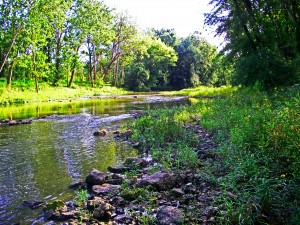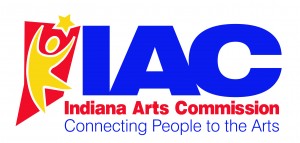
Welcome to The Wabash Watershed: Where the Rivers of Tradition Meet the Rivers of Innovation, the site of poetry features, conversation, and news that I’m pleased to offer as Indiana Poet Laureate.
The Wabash River is a central image in the mythos of our great state. As a river it has always intrigued me, in part because it flows freely for a great distance (411 miles before being dammed in Huntington), forms a border with one of our neighboring states (Illinois), and then flows into the Ohio River, draining into yet another border with Kentucky. By virtue of flowing into the Ohio, it also connects us to the state that shares a name with that river.
Rivers have always intrigued me, in part because they mirror the intricate, interconnected movements of our world.
As a poet, I can’t resist the Wabash as a metaphor of free-flowing power and connection—a connection that lends individuality to Indiana by also acting as a border. What a lovely image—Indiana as its own space, yet connected to others by what flows freely.
Poetry is like that. It grants individual identity, allowing an expression of emotions, ideas, and insights, yet it is never content to remain isolated. The poem, as former United States Poet Laureate, Stanley Kunitz, once said, is always in search of an audience in order to “complete” itself. As poets, we seek connection through words, even if they seem to arise in privacy and isolation.
I trust you’ve noticed the subtitle, Where the Rivers of Tradition Meet the Rivers of Innovation. Rivers are rarely complete in themselves. They feed something larger and—just as significantantly—are fed by many tributaries. So it is with the Wabash. We have a rich tradition of Indiana poetry, and (equally important) it would behoove us to remain open to poetry that expands and builds upon that tradition in innovative ways.
So, the Wabash is fed by many tributaries. So it is with poetry and poets. It is the small, seemingly invisible, currents that form something larger. We are all part of something much larger than the individual could ever be. As “tributaries” we feed that “something larger,” and in the process become it, flowing into it. If we are the Eel River, as just one example, we maintain that individual identity, yet we flow into the Wabash, contributing to a great movement no individual could ever achieve alone.
I’d like to see this image as one of the hallmarks of my laureateship. I am, indeed, greatly honored with the faith my colleagues have placed in me to appoint me to this esteemed position. However, poetry is not about individual accolades. Poetry should be about connection to culture, history, family, even strangers—as well as to the larger order of our cosmos: animals, plants, and rocks.
I hope you will visit this website frequently. I have great things planned for The Wabash Watershed as a site of our common work.
In closing, let me offer one of my all-time favorite quotes—from poet, Gary Snyder’s marvelous book, The Real Work: Interviews & Talks 1964-1979. (How appropriate a title for a book about poetry—The Real Work!) This is a passage I try to remember every day, in order never to lose sight of “the real work” of poetry being a “practice” and not simply a product. I hope it has some value for you as well:
[as a poet I] hold the most archaic values on earth . . . the fertility of the soil, the magic of animals, the power vision in solitude, the terrifying initiation and rebirth, the love and ecstasy of the dance, the common work of the tribe.
Welcome, my friends, to The Wabash Watershed. Let’s get on with “the common work of the tribe”!
George Kalamaras
Poet Laureate of Indiana

